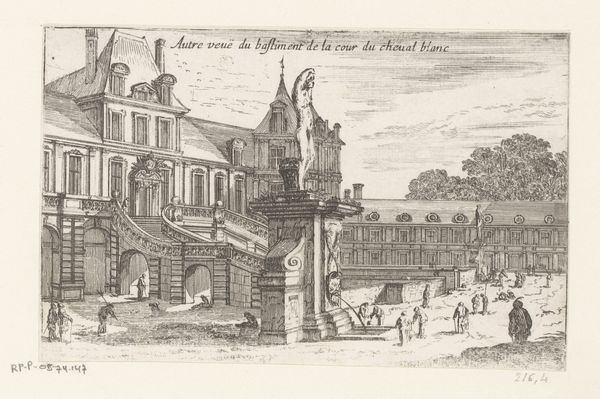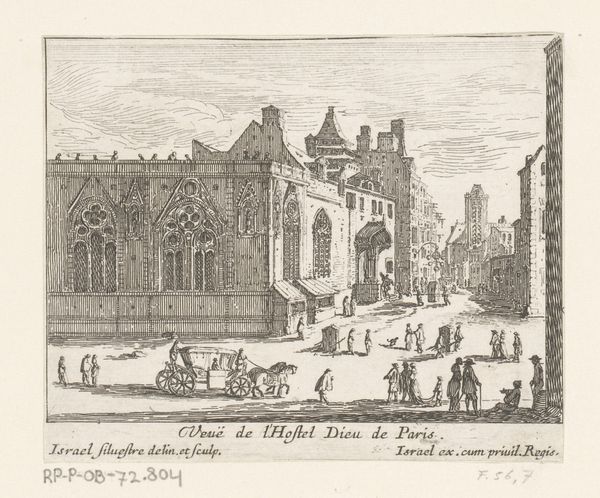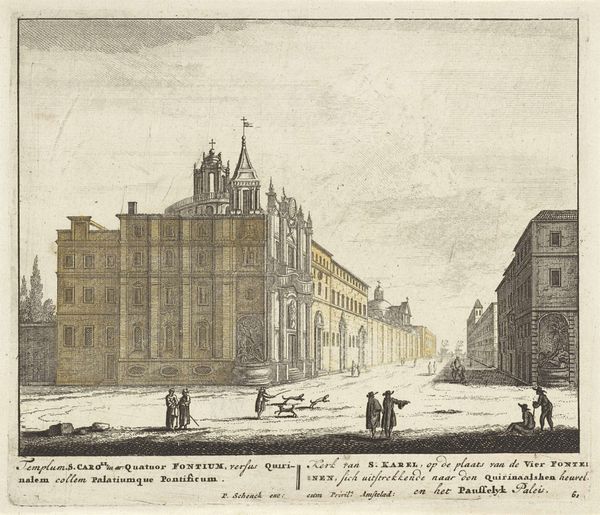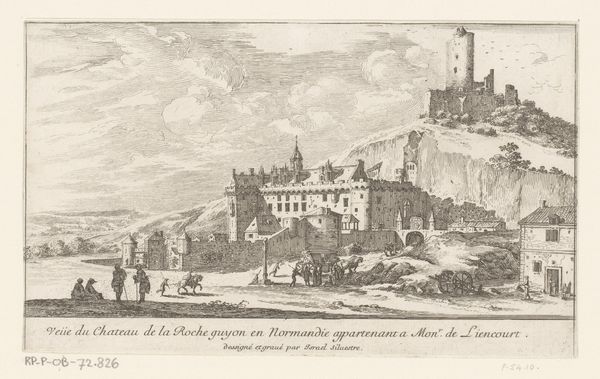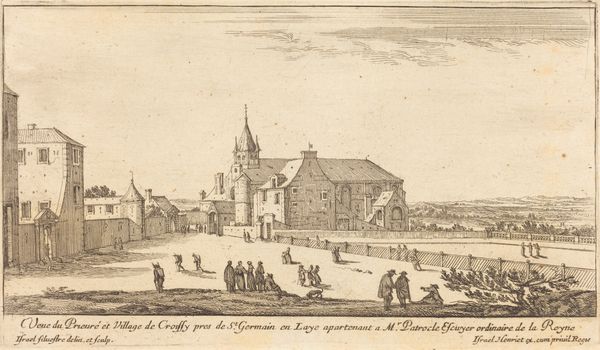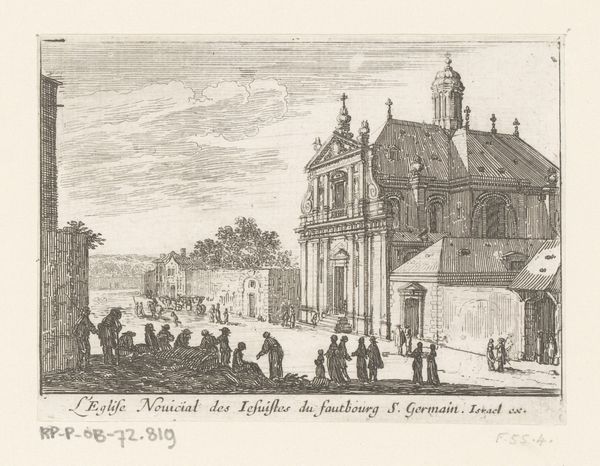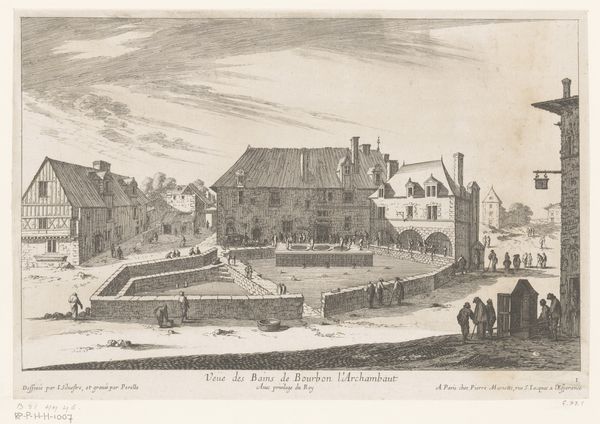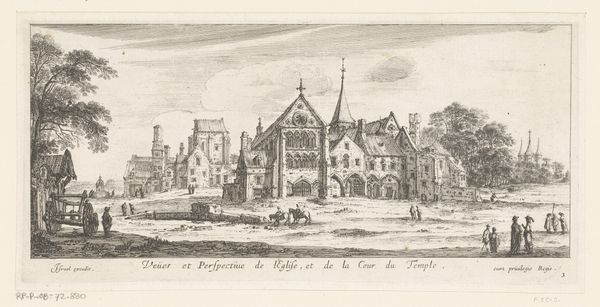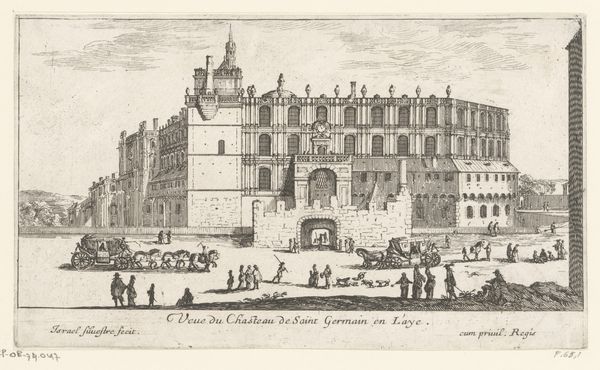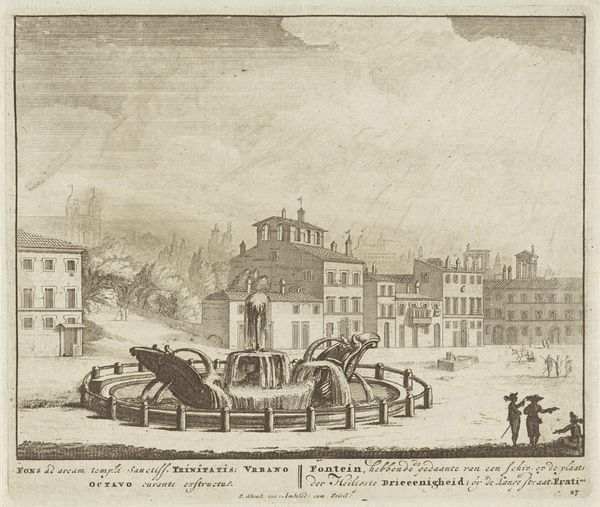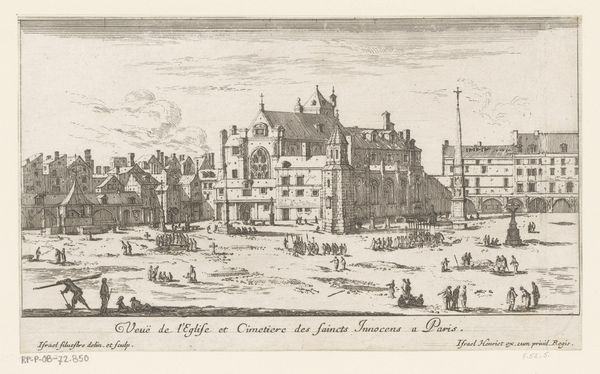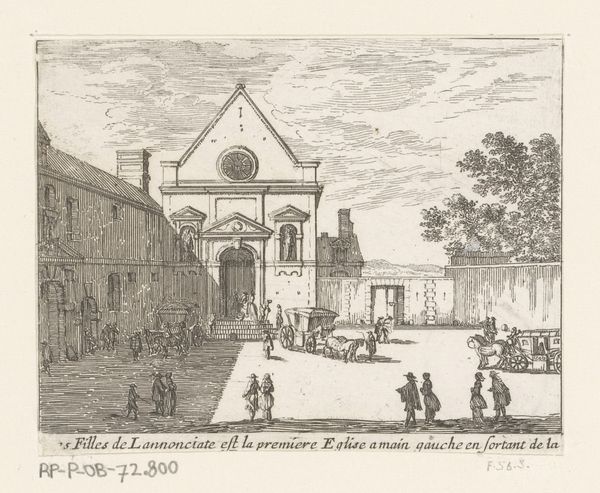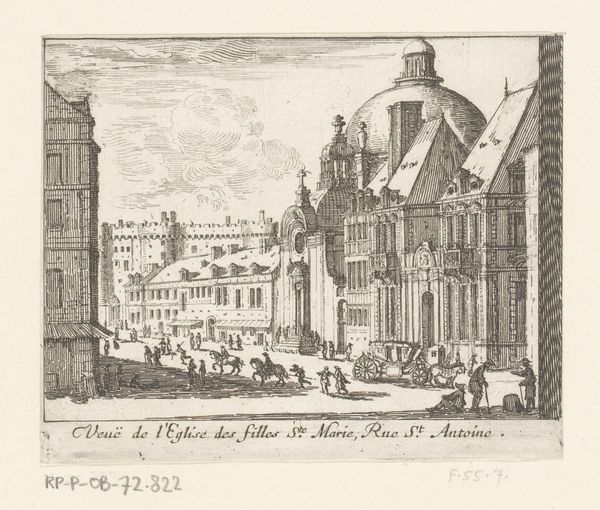
drawing, print, etching, ink, engraving
#
drawing
#
baroque
# print
#
etching
#
ink
#
cityscape
#
engraving
Dimensions: height 87 mm, width 110 mm
Copyright: Rijks Museum: Open Domain
Editor: So, this is Israel Silvestre's "View of the Church of the Order of the Calvary" from the mid-17th century. It's an etching, beautifully detailed. I’m struck by how formal the building appears, almost austere. What jumps out at you? Curator: Well, given Silvestre's prolific output and the function of prints in that era, it is crucial to consider his role as a disseminator of imagery. His prints were instrumental in shaping public perception and knowledge of architecture and urban spaces across Europe. How do you think this image functioned within the broader political and religious landscape? Editor: That's interesting. You mean, was it just a pretty picture, or did it have a job to do? It looks like the Church was affluent. Is that correct? Curator: Precisely. Consider the patronage system. Who do you think commissioned or purchased prints like this? Think about the social classes, their interests, their values. Was this image used to inspire religious fervor, project power, document construction, or simply promote Paris to potential wealthy residents or religious figures? Editor: Okay, it makes me think differently now. The location, "Order of the Calvary," must have had a particular meaning then. Not sure what... Curator: Indeed. Religious orders held significant social and political sway. Prints like this weren't just documents, they participated in shaping perceptions of religious institutions, visually cementing their place in society and inviting speculation about what it would be like to donate or belong. Editor: Wow, it’s much more layered than I initially thought! Now it has an official 'publication' face. Curator: Exactly! And the fact it’s disseminated as a print means it enters the market, subject to various interpretations and uses beyond the artist’s initial intent. Thinking about the artwork’s cultural role encourages us to move beyond aesthetics and really think about historical impact. Editor: This has given me a new appreciation for considering artwork as part of the cultural environment. Curator: Me too! It's vital to reflect upon not only *what* we are seeing, but *how* it functions.
Comments
No comments
Be the first to comment and join the conversation on the ultimate creative platform.
